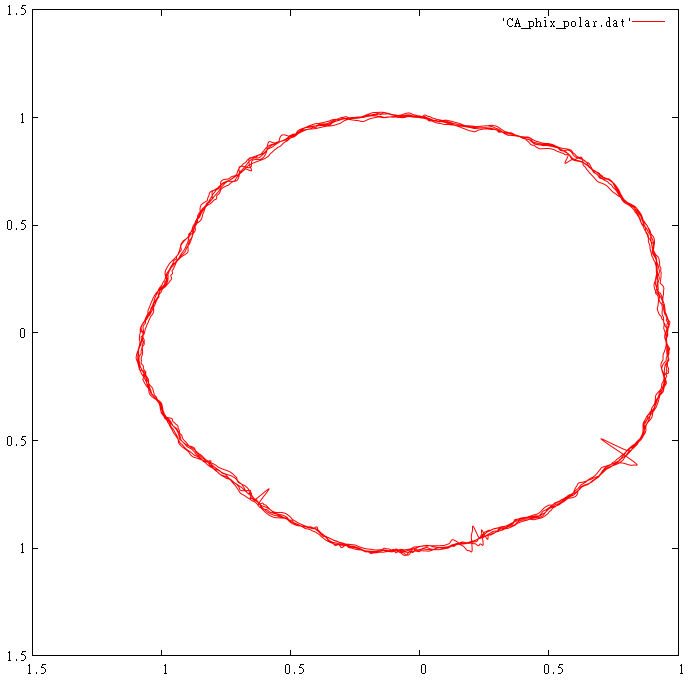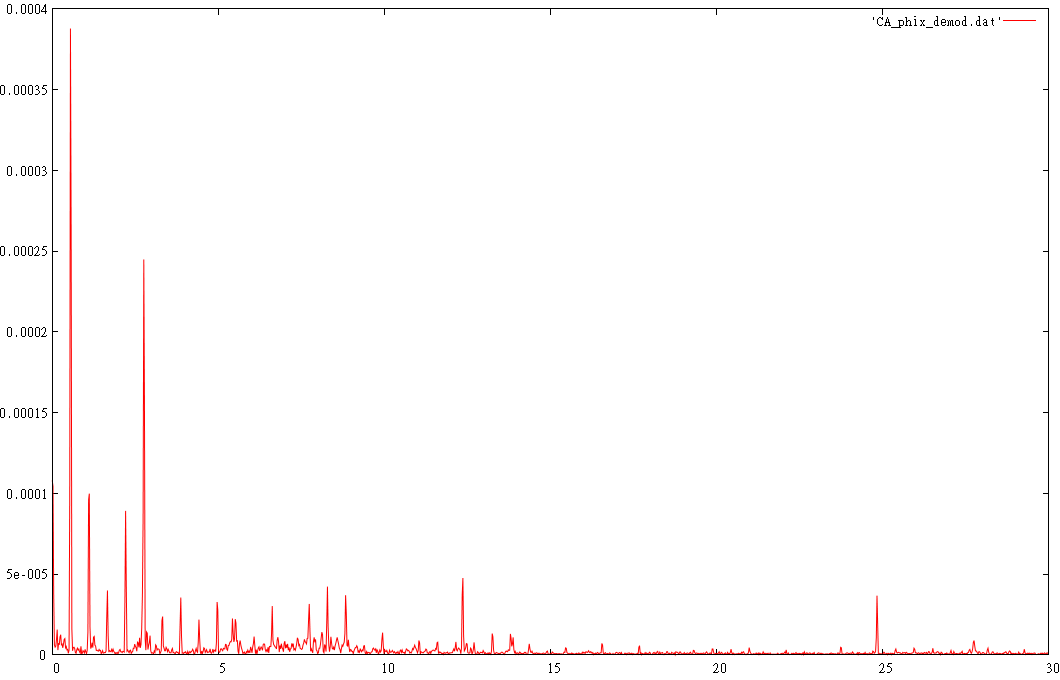Rerurn to Romy the Cat's Site
In the Forum: Analog Playback
In the Thread: Turntable speed analysis.
Post Subject: I'm not sure if God is neededPosted by N-set on: 6/12/2012
fiogf49gjkf0d
This is a new tool, so some training is inevitable. Yes, I saw your first sample with the peaks and my first thought was that it was not the deck, as I could not imagine a mechanism which would produce such spikes so perfectly repetetive (ok, maybe a scratch).
Eliminating the test record input---I agree this is not easy, that's why measuring with several test LP's seems a reasonable work around.
Here is another example of my deck but this time with ClearAudio test LP, which I bought for 50Eu
in a hope to get something more concentric than Ultimate Analog...
Thick slab of vinyl, legendary German company, German pressing, and....fucking eccentric and wrapped (the cart goes like
on a rollercoster)!

The elliptic shape comes from the eccentricity (you can also see clearly visible the dent, but it's origin is unknown to me)
To confirm let's look at the demod freq. spectrum

Bam! A strong peak at 0.555Hz and some of it's harmonics--eccentricity (and probably the wrap)
Observe also the omnipresent 2.72Hz peak from the idler. This is well identified and not record dependent
(this characteristic idler freq. was also confirmed by EMT technician).
One also sees again the 12.4Hz and it's 2nd hrmonic, most probably motor related.
So I think with more and more examples and clever thinking (Paul R is the master) one would eventually learn the tool
and start correlating certain processes in the TT drive with the sonic results.
Yes, I listen to mechanical gramophone sometimes
too. Let me put forward a bold hypothesis: the ear/brain is not so much sensitive to the value of WF but to it's spectrum and stability in time.
The analogy in my hypothesis with what we know about THD is obvious.
Anyway, one should keep in mind that all those spectrograms, plots ect are just some representations
of the reality and not the ultimate reality itself. It helps to build the picture but it is not the whole story for sure.
Think e.g. of platter ringing. It also shapes the sound of the TT, etc etc
Belt flattering: very interesting experiment Paul! What would be nice is to try to correlate it with those circular plots: take
a TT which shows belt fluttering and see it's speed variation plots, trying to recognize that fluttering.
How did you strobe the belt?
Would be interesting to know if that's what's happening in Romy's MS. One mechanism is this: the motor coggs and excites belt+platter system
due to too little damping in the belt itself.
Rerurn to Romy the Cat's Site